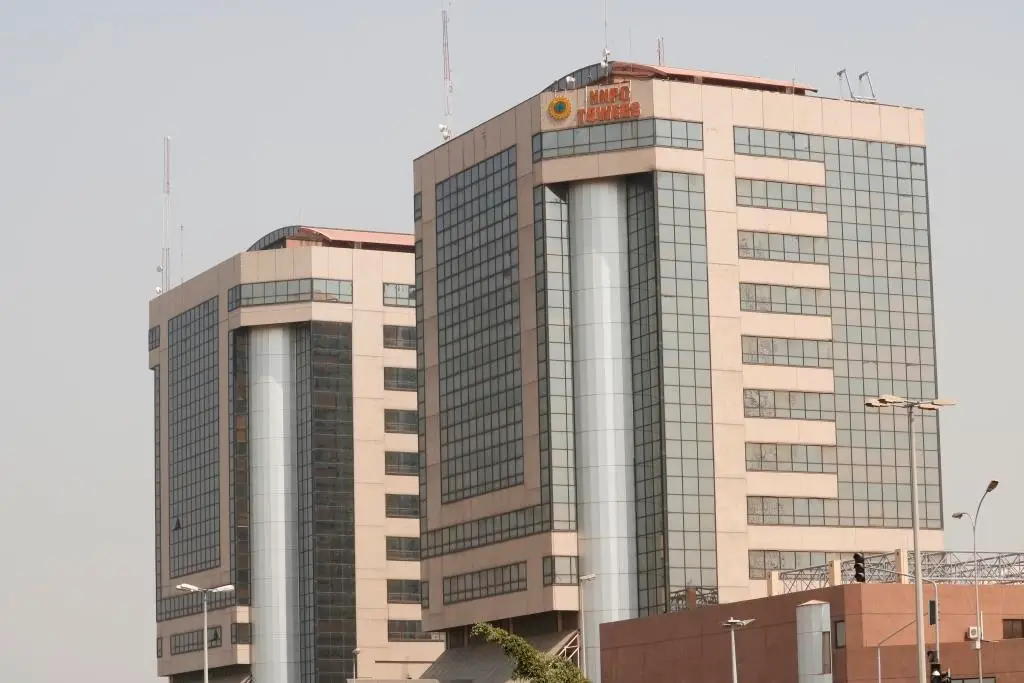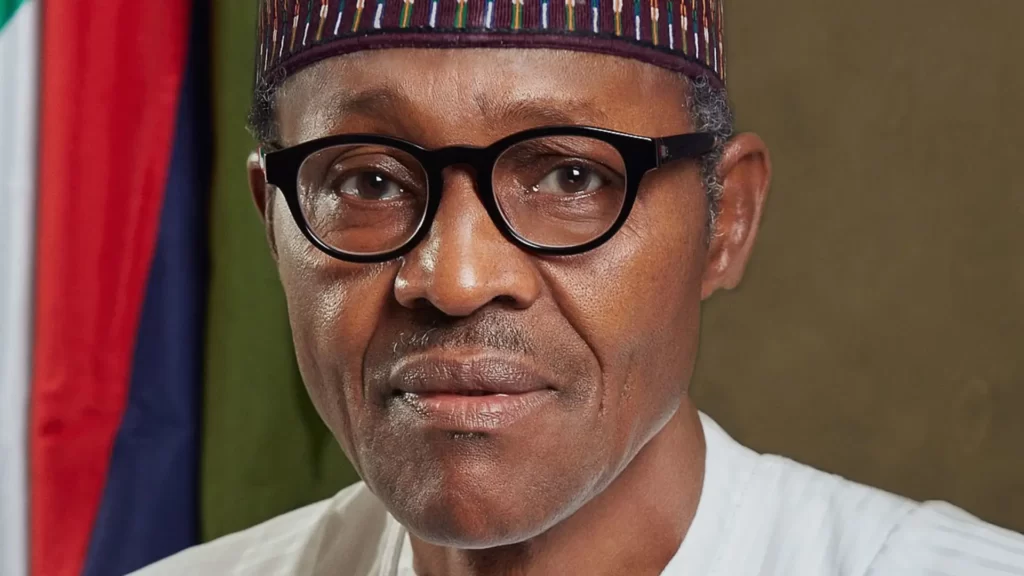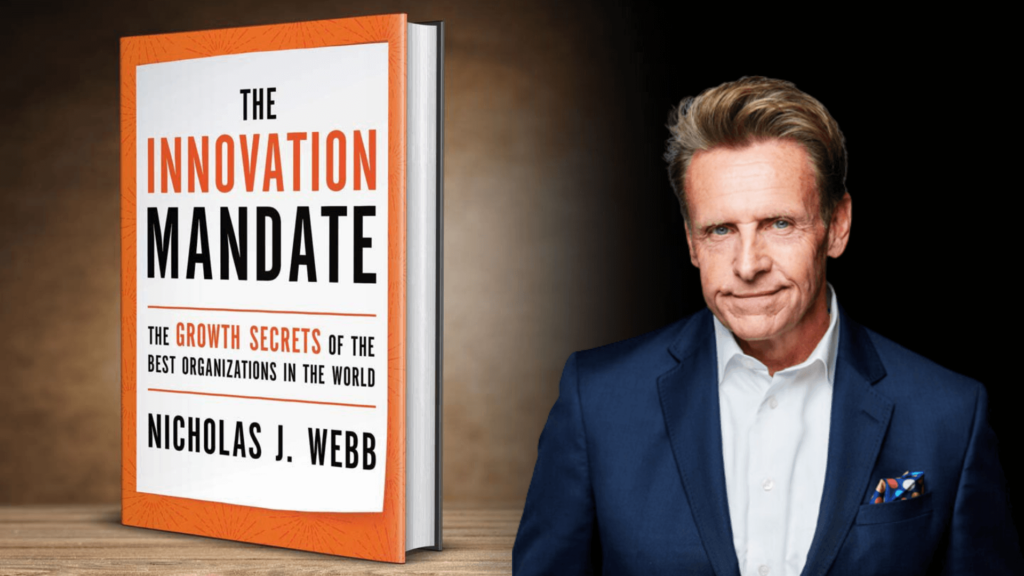Why is Nigeria’s monetary orthodoxy not saving it from escalating inflation?

The Monetary Policy Committee (MPC) of the Central Bank of Nigeria (CBN) has increased the benchmark interest rate (MPR) by 25 basis points to 18.75% from 18.5%, highest interest rate in 22 years. This is the conclusion of the first meeting under President Bola Tinubu, the first under the chairmanship of the acting governor FolashadeShonubi. Before the July meeting, NBS released the June surprising inflation numbers of 22.7% that showed lower than expected impact of the fuel subsidy removal. Inflation is expected to rise further following second and third order impact of fuel subsidy removal. Notwithstanding, demand’s response to price changes is weak due to structural issues and further interest rate hikes only worsen the situation. First, a chunk of the Nigeria economy is not dependent on credit. Second, the major pass through of inflation is the exchange rate. Third, there is extremely accommodative monetary policy through fiscal deficits and significant supply constraints. The major impact of the rate hike will be on businesses with bank loans. They receive letters about what the rate hike means for the interest they pay on their bank loans.Currently, the prime lending rate which stood at 14.71% and the maximum lending rate which is 28.31% will be adjusted upward with the new hike in the MPR. Thishigher borrowing costs for businesses is weakening businesses and the banks and slowing down economic activity. Few weeks ago, we analysed here how there has been a shift by the businesses towards commercial papers, with an average rate of about 14% – 16%.
Nigeria’s Inflation reaches a 20 year high

The National Bureau of Statistics (NBS) unveiled the inflation data for the month of July, shedding light on the evolving economic landscape. Headline inflation rate for July 2023 surged to 24.08%, marking a substantial increase from the June 2023 rate of 22.79%. This translates to an uptick of 1.29% points in the span of just one month, `underscoring the rapid pace of inflationary pressures following the removal of fuel subsidies.On a year-on-year basis, the headline inflation rate exhibited an even more pronounced ascent, standing at significant 4.44% points higher than the corresponding period last year, which recorded a rate of 19.64%. Factors driving up prices are amplified energy prices, depreciation of the Naira, and the surge in money supply. These factors have collectively contributed to the overarching inflationary pressures that we see. The July inflation figures also provides a comprehensive snapshot of the impact of the removal of the exchange rate cap, directly impacting core inflation, which soared to a rate of 20.47%.The persistent rise in food inflation further exacerbates the overall inflationary landscape. In July 2023, food inflation registered at a substantial 26.98%, compared to previous month’s rate of 25.25%, following increases in transportation costs, agricultural planting season, and the prevailing security challenges that have impacted supply chains. The outlook is further rise in inflation. The ongoing reforms are anticipated to exert substantial upward pressure on consumer prices throughout the latter half of 2023. As a result, inflation is projected to average over 25% for the entirety of 2023, marking the most substantial annual rate since the 1990s. The rising cost and volatility of the exchange rate is the greatest driver of Nigeria’s inflation. Acknowledging this, the acting governor of the Central Bank of Nigeria (CBN), after meeting with the President says they will embark on measures to stabilise the Naira. He warned speculators that the Bank will take measures over the next few days which he did not spell out that he expects will improve the position of the Naira on the streets. As of the following Monday, the rate at the I&E window stood at N744.41/$ and the street market rate stood at N935/$, this shows a gap of 25.6% or N190.59. Fuel imports is another, but also dependent on the Naira’s exchange rate to the US dollar. Fuel imports into Nigeria fell to 106,000 barrels per day (bpd) in July 2023, from the 205,200 barrels per day recorded in May 2023, a near 50% decline in fuel imports. It follows the removal of fuel subsidy by the government on May 29th. Since then, transports costs have increased by as much as 100% in some instances and raised food prices. The data is provided by S&P global commodity insights. It is consistent with the data from the Nigerian Midstream and Downstream Petroleum Regulatory Authority (NMDPRA) that fuel consumption in Nigeria dropped to 46.38 million litres per day following the removal of the subsidy. Meanwhile, fuel prices are expected to rise further following volatility and the weakening of the Naira. The expectation is that fuel price will reach N700 per litre in the coming weeks based on a Naira to US $ of N900. The government has now directed that fuel prices should not rise beyond N600 per litre. As expected, the National Bureau of Statistics ((NBS) has shown that the average fare paid by commuters for bus, motorcycle, air, and water journeys went up, increasing by as much as 97.88% for inner city and 42% for intercity bus journeys in June, compared to May 2023. It reflects the observation that, after the near 200% increase in fuel prices on May 29th – shorter trips doubled in prices while longer trips did not increase as much.To control inflation, the CBN had recently strengthened its orthodoxy approach by raising rates to 18.5% in its last meeting.
Nigeria’s National Oil Company borrow US $3 billion from Afreximbank to support the Naira

The Nigerian National Petroleum Company Limited recently announced it has secured a US $3 billion emergency loan from Afreximbank. The loan will be used in supporting the ongoing fiscal and monetary policy reforms of the President. The Naira has been on free fall since the aggregation of all the Central Bank of Nigeria’s exchange rate windows into the I&E window, depreciating about 27%, after an earlier about 40% devaluation two weeks after President Bola Tinubu assumed power. The Naira currently trades to the US $ at N922 on the streets. This unsettling trend was accompanied by a steady reduction in the country’s external reserves, further contributing to the currency’s weakened state. The aggregation of all exchange rate windows into the I&E window and the removal of the restrictions on the exchange rate has led to a depreciation of about 27% in two months. Before June 13, 2023, the I&E window had witnessed an average exchange rate of N465/$ in May 2023. Following the lifting of the restrictions, we now have fluctuations in the range of N740-795/$ at the I&E window. Worse, the arbitrage that was eliminated has reappeared, with theNaira exchange rate to the US dollarnow N930-950/$ on the streets. In the same period, the external reserve declined to US$33.86 billion as of August 14, 2023, 9% or US $3.22 billion since the start of the year. The driving forces behind the depreciation of the Naira and the resultant widening of the exchange rate premium are multifaceted. The key point though is that both demand and supply are not responding to price changes in the short term. The source of supply that is largely within the control of the government – crude oil supply – is in grave danger, with July production barely above 1 million barrels a day. Meanwhile, capital importation has exhibited a prolonged decline, with data from the National Bureau of Statistics (NBS) showing a 45% reduction, from US$2.19 billion in Q4 2021 to US$1.32 billion in Q1 2023.
Buy Now, Pay Later: Buhari’s 8 years of fiscal policy

The recent revelation that President Buhari had presided over a N22 trillion (US $51 billion) borrowings from the Central Bank of Nigeria (CBN) is a classic summary, and encapsulates fiscal policy in the last eight years – buy now, pay later. After the revelation, the rubber stamp Senate approved the President’s controversial ways and means as debt. As expected, the Nigeria Labour Congress (NLC) and the Trade Union Congress (TUC) found the approval disgusting. The N22 trillion loan from the CBN was extra budgetary spending by the government without approval by the Senate and the House of Assembly, and an unprecedented scale of inflation tax on Nigerians and businesses. Also, the government contravened the CBN Act 2007 that stipulated that “ways and means” should not exceed 5% of the previous year revenue. Worse, Nigerians were lied to and data on budget and deficits were manipulated for eight years. Three months after, there is no indication yet if there will be ever a probe. The ramifications of the buy now, pay later policy could not have come sooner after President Buhari left office as virtually all the loans raised under his watch are due after he left office. One of such debt is the International Monetary Fund (IMF) US$3.4 billion collected in the thick of the Covid – 19 dynamics of 2020. According to IMF position on Nigeria, the country is expected to repay most of the capital and interest payments on SDR drawings between now and 2025 – SDR 373.81 (US $497.17 million) is due this year, SDR 1,322.01 (US $1.76 billion) is due next year, and SDR 650.58 (US $865.27 million) due in 2025, based on US $1.33 to 1 SDR. Calculated daily, the SDR is determined by summing up the value in US dollars based on market exchange rates of a basket of major currencies – US dollar, Euro, Japanese Yen, UK Sterling, and Chinese Renminbi. Nigeria’s Debt in US $ in Billions The graph shows the trajectory of debt in over 20 years, but there is now a sense that this data may not have captured all of Nigeria’s debt in the last eight under President Buhari.By the close of December 2022, the country’s total public debt had surged to N46.25 trillion or $103.11 billion, according to the Debt Management Office (DMO). This figure represents a substantial 14.46 percent increase when contrasted with the N39.56 trillion (USD 95.77 billion) recorded on December 31, 2021. This upward trajectory in public debt is attributed to fresh borrowings undertaken by both the Federal Government of Nigeria (FGN) and sub-national governments. These borrowings have predominantly been employed to bridge budget deficits and fund various developmental projects. As debt levels rise, concerns about Nigeria’s creditworthiness increases. This could lead to higher borrowing costs for the government in the form of higher interest rates on new debt issuances. It might also make it more difficult for the country to secure favorable terms for international loans. This can increase the risk of sovereign default, which would have severe consequences for the country’s reputation and ability to access international financial markets in the future. Considering these implications, managing and reducing the public debt burden becomes imperative for Nigeria’s economic stability and sustained growth. Effective debt management strategies, prudent fiscal policies, and measures to enhance revenue generation are crucial to mitigating the potential negative consequences of rising public debt.
Skyrocketing Ticket Prices, Trapped Funds and Worsening International Investment Conditions

Travelers from Lagos and Abuja international airports in the last three months have been confronted with about 300% – 400% difference in prices compared to those that fly from Cotonou airport in Republic of Benin and Kotoka airports in Accra, Ghana. It became common for Nigerians to pay an average of about US $2000 – US $3000 for return trips to Europe in the busy months of August and early September. It follows the lingering airlines trapped funds, now estimated at close to a US $1 billion. Speaking to an attendant in one of the airlines offices in Lagos, he said the airlines, not sure of when they will recover their trapped funds, are not only charging more in case they are not able to recover the trapped funds, but also that passengers are paying in US dollars. The new aviation minister recently said he will work on the matter in relation to Emirates. However, it is not only airlines that have their trapped funds in the country. Fast Moving Consumer Goods (FMCG) companies and portfolio investors are also caught up in Nigeria’s severe macroeconomic challenges and resultant capital flow restrictions. Indeed, they were perhaps the most delighted after the Central Bank aggregated all foreign exchange windows into the importers and exporters (I&E) window. They had expected that the policy will make it easier for their estimated US $10 billion to recovered. For portfolio investors that exited the capital market or sold some of their shares, their trapped funds accrued on the back of their inability to exit Nigeria. For the FMCGs, they borrowed foreign currencies from parent companies for their inputs and raw materials. Even before June 40% devaluation of the Naira, it was difficult to estimate how much was trapped in the country, as some may have been converted it into other uses until there is an opportunity for them to exit. That brings us to what is likely to happen to the data below. Foreign airlines were the most agitated. Following the trapped cash, they provided windows for Nigerians to buy tickets using their US dollar or Sterling Cards, raising the costs of international tickets as explained above. Naira Exchange Rates with the US $ at the I & E and the Parallel Market To reflect changing economic conditions and mitigating exchange rate risks, they raised exchange rates applied to flight tickets multiple times. For instance, in May, they raised Rate of Exchange, (RoE) from N610 per dollar to N634 per dollar. It was as a continuous fall out of about US $800 million trapped funds in the country. From March 2023 – N460 / $, to N551 / $, to N610 / $, and in May to N634 /$. Foreign airlines trapped funds increased from $744million in March to $802 million in April despite several means deployed to avoid collection of their funds in Naira, to reduce the amount of money trapped in Nigeria. The stampede that followed the aggregation of all exchange rate windows and devaluation reflects downside risks to international investments in Nigeria, including the concession of some major airports in the country. Second, E-commerce that relies on aviation for speedy delivery were impacted by the trapped funds in Nigeria. Also, and it is already the case, Nigerians are paying far more for equivalent international travel tickets, and worse since June. In matters of economic decisions, especially relating to investments, the greatest costs are usually the opportunity costs. Nigeria is increasingly losing its hard-earned credibility won in the 2000s and early 2010s for relatively macroeconomic stability, the minimization in investment distortions, and general sound macroeconomic management. The new government have started all over again and grind to regain any sort of credibility before the investments will start to come in again. Why? There are many reasons, but the bottom line is the increasingly weakening and worsening macroeconomic environment that means, currently in Nigeria, investment flows are largely one-way traffic out of the country, including by domestic residents.
Nigeria’s Crude Oil Production dropped nearly 40,000 a day in March

Nigeria’s crude oil output dropped by 38,102 barrels per day in March 2023, translating to a cumulative loss of about 1,181,162 barrels in the month, and signaled the first plunge in oil production in seven months. In monetary terms, average cost of Brent, the international benchmark for Nigeria’s oilwas US $78.43/barrel. Therefore, by losing 1,181,162 barrels in March, Nigeria failed to earn a total of US $92,638,535.66 (N42.71bn at the official exchange rate of N461/US $), during the period under review. Nigeria’s Crude Oil Production The major cause of the decline was a pipeline explosion at a major export pipeline in Rivers State, the 180, 000 barrels per day Trans Niger Pipeline that passes through the Rumuekpe community. It was gathered that the explosion happened after a crude oil pipeline that belong to Shell Company in the community was tampered with by vandals. Second, the drop in oil output volume is also ascribed to the general overhauling and maintenance of oil pipelines across Nigeria’s key oil production locations, which may have resulted in the closure of several pipes during significant repairs. Ahead of the release of the April monthly oil market report (MOMR) of the organisation of the petroleum exporting countries (OPEC), the focus was on what happened to crude oil output in March 2023. It was thought that the fall in oil production in March was only temporary and will not jeopardize the country’s foreign earning. Notwithstanding, there was an urgent need for the country to improve on its production output by addressing oil bunkering and theft as well as illegal refining if it does not want to miss the output level needed for the 2023 budget, which stands at 1.69 million bpd for the year.
Nigeria’s Inflation and Exchange Rate to the US $ under President Buhari

April inflation numbers, the last before President Buhari left office, rose to 22.2%, from 22.04% in March, fourth consecutive monthly increase and the highest inflation rate since September 2005. Though the rate of increase has slowed, inflation has not peaked yet.The graph below shows the dynamics of inflation and the Naira’s exchange rate to the US $ under the President. Nigeria’s Inflation Rate and Exchange Rate with the US $ under President Buhari The graph above shows the movement between the country’s rise in the costs of goods and services and the exchange rate to the US $. It clearly shows the results of the three macroeconomic shocks under President Buhari – the one he inherited in 20215, Covid – 19 global economic shock, and the Russian /Ukraine war that would have been net positive or at best neutral if domestic economic conditions and management were right. While the shocks were the source of the macroeconomic imbalances, President Buhari’s catastrophic economic policies made it worse through his Idi Amin’s style monetary policy accommodation, as now evidenced by the N22 trillion “buy now, pay later” inflation tax. Between 2014 and 2016, the Central Bank of Nigeria (CBN) devalued the Naira 8times from N161in September to N305 in Sept 2016, while gaps and arbitrage opportunities started to emerge, as the parallel market rate increased from N175 in Nov 2014 to N431 in Sept 2016. The same patterns emerged after the Covid – 19 and the Russian / Ukraine war shocks. At the May 22 – 23 monetary policy committee (MPC) of the CBN, the monetary policy rate (MPR) was raised from 18% to 18.5%. It had signaled in the last meeting that it will continue to tighten on the expectations that the government will remove fuel subsidy. That is not going to happen anymore. It said at after the meeting, and it has shown again, that the rate of increase has slowed, but inflation is still very sticky. As in other macroeconomic imbalances, the expectation is that the new administration will provide concrete measures to provide confidence that it can stabilise the economy in the medium term. Three of such measures will include a credible economic team, a weak appetite for deficits, and closing the distortionary gap between the I & E window and parallel rates of Naira’s exchange rate to the US $.
Uncharted: How to Navigate the Future

Author – Margaret Heffernan This period, and this season, Nigeria is in Uncharted territory, so it is fitting to read a book with that title. What Heffernan has done in this book is quite interesting. Economists, and certainly me, look out for patterns because it helps us to increase the power of predictability and reduce uncertainty. Oh yes, historically, all the knowledge we often seek is to help us navigate the future better despite its uncertainties. But Heffernan showed with stories after stories that no matter the established pattern of things, random things still happen. Those that are conscious of that navigate the future better. She said, “the future isn’t perfectly knowable and never has been”. As much as greater levels of information like we have never seen before has made us able to plan, and make well informed estimates, “the advent of globalization, coupled with pervasive communications, has made much of life complex: nonlinear and fluid, where very small effects may produce disproportional impacts”. The story quite interesting is that of Irving Fisher, Roger Babson, and Warren Persons, all economists during the 1929 US economic crisis, all contacted tuberculosis, one of the most dangerous diseases at the time in the US and built their reputation on the ability to forecast the dynamics of the markets. However, “only Babson, the least scientific of the three men came out with his reputation enhanced” after the crisis. There are more recent examples in the book – the Donald Trump election and Brexit in 2016. What these stories, experiences, and everyday lives mean, as Heffernan consistently demonstrated, is that we live in a world “where there is a lot of irreducible uncertainty”. In response to a life of so many uncertainties, Heffernan recommends that we see it as probabilities, constantly acknowledging that we can’t know all that the future holds, and with constant experiments to prepare for it.
The Innovation Mandate: The Growth Secrets of the Best Organisations in the World

Author – Nicholas J. Webb While reading this book, I also decided to check the author on the internet. In one of his speeches, he said something remarkable, ‘That, of all those that give thought leadership on innovations, he is the only that has several patents’. It is that extension of confidence and clarity that you will find in the book. What is your organisation’s mandate? What is the most important thing to the organisation and its employees? For some, growth is their mandate, while for some, it is profit. To Nicholas, “making profit is nonnegotiable”. If profit is the topline nonnegotiable, then innovation is the underlying catalyst. You will find in the book that ‘if your organization doesn’t innovate, its headed for early demise’. The history of the world is that of innovation. Successive generations have always sought to improve on the ways, products, services of the previous generation. It is what is defined as progress, growth and responsible for the increasing value creations we see today. But in the last 25 years, it has become even more desperate to innovate as a business. Why? The first is that we are seeing a rate of change never seen in the history of the world. Rapid technological advances have made value of ‘old’ innovations time value very limited. Imagine how long the world used the landline as the means of civil communication over distances before the mobile phone arrived. While the mobile is still with us, I am sure none of us can remember what the first set of mobile phones looked like, just in the space of a generation. The second point is the severity of disruption is increasing. This is a major threat to businesses as it increases competition to levels and at speed never seen before now. Due to a variety of disruptions, new innovations can wipe out a company or reduce it to a shell of its old self. But never mind, Nicholas set out how you can make innovation the ‘rock solid’ mission of your organization, designing a process of innovation that ensures that your business always stays ahead.
The Hard Thing About Hard Things – Building a Business When There Are No Easy Answers

Author – Ben Horowitz If you have just started a business, just became a CEO, or involved in some sort of way in growing and building a business, do nothing else until you have finished reading this book. This book is an articulation of the author’s journey as an engineering staff of Silicon Graphics, NetLabs, Lotus Development, Netscape, and AOL before co- founding LoudCloud, and later Opsware. This journey culminated in the sale of Opsware to Hewlett Packard for US $1.6 billion in 2007. So, Ben’s journey is perhaps not unique for entrepreneurs and many businesspeople because it is full of ups and downs. Every businessperson will tell you that. It is also not unique in the sense that you are invariably ‘married’ to the business, especially at the early growth stages. Of course, it is also not unique about all the functions that you must carry out – hiring, selling, seeking capital etc. But Ben’s story is a 20-year packed and intense waves of “euphoria and terror”. In the middle of it are how things that not within your control shapes the business and its outcomes – the dotcom bubble of 2000. Unlike many other management books, this book does not just tell you about how hard it is to run a business, it shows and demonstrates what those hard things really are. They are not the ambitions, goals, targets, etc. but how to deal with those things that are not taught in all the best business schools in the world – relationships, family, friends, firing etc. But then, it is still the case that “nobody cares” – Just Succeed. Since selling Opsware to Hewllett Packard in 2007, Ben has been the co-founder and general partner of Andreessen Horowitz, a Silicon Valley based venture capital firm that invests in technology firms. This book will humble and inspire you. Above all, it will tell you that “stuff” happens, hard “stuff” happens, and it is how you hold your nerve and navigate those moments that gives you the best possible chance of success.


